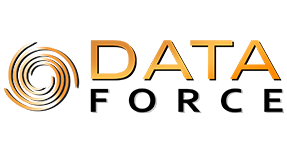Three Dimension Measuring System
General Description
The “3-Dimention Measuring System” is intended to perform high precision 3-D geometrical measurements. The device is provided with a high precision mechanical ensemble in order to decompose the movement of a measuring-head in three coordinates axis. The coordinates values where the measuring-head touch the tested piece are stored by dedicated control electronics. The high level of data processing like geometrical verification of a gear box is performed in a host computer. The movement of measuring-head is achieved manually or by the host computer.
The main components
The coordinates on each axis are obtained with incremental displacement transducers. Those shifting transducers give a pulse on each micron and indicate the sense of displacement also. Those pulses are taken by the control electronics in order to generate a binary number with sign on each axe. Those binary numbers represents the current coordinate of each axe. When the measuring-head touch the measured piece, a special electronic circuit is open and the current coordinates values are recorded and then will be send to the host computer.
If the measuring-head touch continuously the piece, there is a continuously measuring. If the measuring-head touch the piece in isolated points, there is a discrete measuring.
The structure of the 3-D measuring system can be seen in Figure11.1 and contains:
– Three incremental displacement transducers (X, Y, Z);
– The 3-D Sampling Module (ME);
– The Host Computer (C);
– The Measuring-Head (F);
– The hand held Control Panel (P).
The Incremental Transducers generates the displacements pulses. The 3-Dimention Sampling Module generates the instantaneous coordinates of the trajectory of measuring-head and sends them to the host computer. In the same module are detected also the measuring errors and are taken operator commands.
The Measuring-Head is a discrete type one. It is build around a metallic stick. The stick has in one end a metallic sphere, in order to make the mechanical contact with the measured piece, and to the opposite end has three metallic cylinders, 120 degree orientated. Those three cylinders are able to open very fast one of three electrical contacts connected in series. In this way, in very small vicinity against the measuring point, one of the three contacts will be opened. Starting to this contact a dedicated electronic circuit generates an accurate measuring pulse (TFR).
The Architecture of the 3-D Sampling Module
The 3-D Sampling Module contains the followings blocs:
The Synch Bloc, (S) synchronizes the shifting pulses from the axes with the clocks of the measuring machine.
The Multiplexing Bloc, (M) sends the shifting pulses to the Counting Bloc. The shifting pulses of each measuring axe are separated in dedicated cycles of time.
The Counting Bloc, (24_CT) is the same for each measuring axe and counts, in a time multiplexing mode, the coordinate for each axe. The coordinate is represented by an integer number with sign, on 24 bits in complement modulo 2.
The Counting Bloc is a 24 bits binary reversible counter and works in three time cycles named “CK0”, “CK1” and “CK2” (see Figure11.3). In the first time cycle, CK1, the counter 24_CT is parallel loaded from the file register “RF1” with the previous value of the coordinate of respective axe. In the second time cycle CK2, the counter updates the current coordinate value according to the shifting pulses of the axe (increment, decrement or do nothing). In the third time cycle CK2, the updated coordinate is written back to the same location in the file register RF1. In this fashion the file register RF1 contains the current values of all the three coordinates.
When the sampling head touches the measured piece all the three instant coordinates, from the file register RF1, are transferred to the file register RF2. Then, the measured coordinates from file register RF2 are transferred to the host computer.
The Errors Detecting Bloc, (DE) indicates the speed overflow of the measuring-head and the binary overflow of the 24 bit binary counter.
The Control Bloc, (CM) generate the control signals and clock phases for the whole 3-D Sampling Module according of the operator or host computer commands.
The Host Computer is a process computer (model PDP-11) and is connected to the measuring system through a 16 bits parallel interface.
